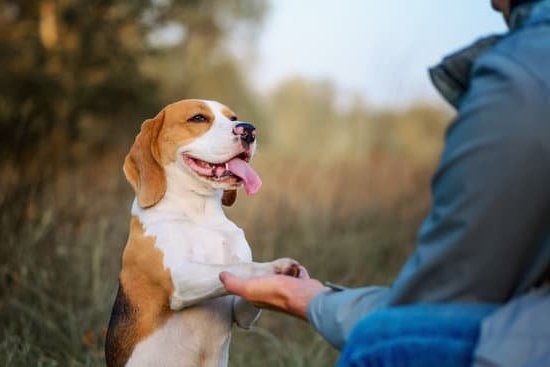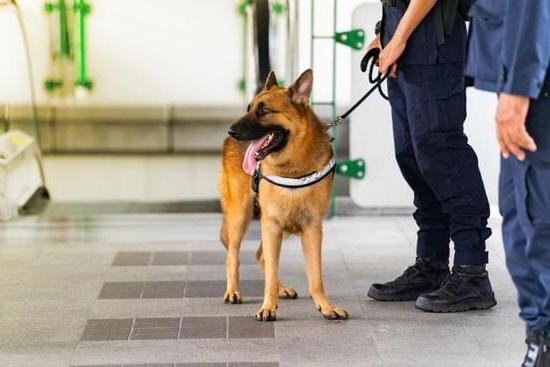Dogs are den animals and like to have their own place to retreat to. A crate can provide this for your dog and can also be used as a training tool.
When you first get your crate, put a soft blanket or towel in it. Your dog will probably not want to go in at first, but will eventually. When your dog does go in, give him a treat and some praise.
Start by putting your dog in the crate for short periods of time, gradually increasing the time. If your dog cries or barks in the crate, do not release him. He will stop after a while. If you let him out when he is barking, he will learn that this is how to get your attention.
The crate can also be used as a place for your dog to sleep. Again, start by putting him in for short periods of time and gradually increase the time.
A crate is a great way to potty train your dog. When you first see your dog start to sniff around or go to the bathroom, pick him up and put him in the crate. Praise him when he goes in the crate.
The crate can also be used as a place to put your dog when you are not able to watch him. This will help prevent him from getting into trouble.
By using a crate, you can help your dog feel safe and secure.
Crate-Trained Dogs Only
Dogs that are crate-trained are much easier to live with and can provide their owners with years of companionship. Crate-training is the process of teaching a dog to go into a crate and stay there until released. It is a very effective way to housebreak a dog and can also be used as a place for the dog to sleep and as a “safe” place when the owner is not home.
The crate should be big enough for the dog to stand up, turn around, and lie down in. It is important to never use the crate as a place to punish the dog. The crate should be a happy place for the dog where he can go to relax and feel safe.
The best way to crate train a dog is to start when he is a puppy. Put the crate in a place where the puppy can see and smell you. Put a toy or a treat in the crate and let the puppy go in and get it. As the puppy becomes comfortable going into the crate, close the door for a few seconds and then let him out. Gradually increase the amount of time the puppy spends in the crate with the door closed.
When the puppy is comfortable being in the crate for long periods of time, you can start using the crate as a place to housebreak him. Put him in the crate after he has had a chance to relieve himself outside and only let him out when he is calm and has gone to the bathroom. This may take a while, but eventually the puppy will learn to only go to the bathroom outside.
The crate can also be a helpful tool when the owner is not home. If the dog is crate-trained, he will be less likely to get into trouble when left alone. The crate can also be a place for the dog to sleep at night.
Crate-trained dogs are much easier to live with and can provide their owners with years of companionship. Crate-training is the process of teaching a dog to go into a crate and stay there until released. It is a very effective way to housebreak a dog and can also be used as a place for the dog to sleep and as a “safe” place when the owner is not home.
The crate should be big enough for the dog to stand up, turn around, and lie down in. It is important to never use the crate as a place to punish the dog. The crate should be a happy place for the dog where he can go to relax and feel safe.
The best way to crate train a dog is to start when he is a puppy. Put the crate in a place where the puppy can see and smell you. Put a toy or a treat in the crate and let the puppy go in and get it. As the puppy becomes comfortable going into the crate, close the door for a few seconds and then let him out. Gradually increase the amount of time the puppy spends in the crate with the door closed.
When the puppy is comfortable being in the crate for long periods of time, you can start using the crate as a place to housebreak him. Put him in the crate after he has had a chance to relieve himself outside and only let him out when he is calm and has gone to the bathroom. This may take a while, but eventually the puppy will learn to only go to the bathroom outside.
The crate can also be a helpful tool when the owner is not home. If the dog is crate-trained, he will be less likely to get into trouble when left alone. The crate can also be a place for the dog to sleep at night.
How To Crate Train An Old Dog
Many people think that crate training is only for puppies, but it can be just as helpful for older dogs. In fact, crate training can help old dogs feel more relaxed and secure in their environment.
Here are a few tips for crate training an old dog:
1. Start by introducing your dog to the crate gradually. Put a soft blanket or towel in the crate and leave the door open so your dog can explore at his own pace.
2. Feed your dog his meals inside the crate. This will help him associate the crate with positive things, such as food and relaxation.
3. If your dog is reluctant to enter the crate, try tossing a few treats inside and encourage him to go after them.
4. Once your dog is comfortable going into the crate, begin closing the door for short periods of time. Gradually increase the amount of time he spends in the crate.
5. If your dog starts to whine or bark in the crate, don’t let him out until he’s quiet. This will help him learn that whining and barking will not get him what he wants.
6. Praise your dog when he behaves well in the crate. This will help him associate the crate with positive things, such as praise and relaxation.
By following these tips, you can help your old dog feel more comfortable and secure in his crate.
Escape The Crate Dog Training
Welcome to Escape The Crate Dog Training! We are professional dog trainers who specialize in teaching dogs how to escape from their crates.
We know that many dog owners find crate training to be a helpful way to house train their dogs and to keep them safe when they are not able to be supervised. However, we also know that many dogs find crating to be a very stressful experience. This is especially true for dogs who are not used to being crated, or who are not comfortable being confined in a small space.
For these dogs, crate training can be a real nightmare. They may bark, chew, or even urinate and defecate in the crate in an attempt to escape. This can lead to a lot of frustration for both the dog and the owner, and can make crate training significantly more difficult.
That’s where we come in. We specialize in teaching dogs how to escape from their crates. We show them how to unlock the door, push the latch open, or even climb out of the crate. Once they have learned how to do this, they will be able to feel safe and comfortable in their crates, and crate training will be a breeze.
If you are struggling with your dog’s crate training, or if you just want to make sure your dog is safe and comfortable in his or her crate, please give us a call. We would be happy to help.
Can You Crate Train A Dog With Separation Anxiety
?
The short answer is yes, you can crate train a dog with separation anxiety. The key is to be very patient and to take things slowly.
One of the best ways to crate train a dog with separation anxiety is to start by leaving the dog in the crate for very short periods of time. Gradually increase the amount of time the dog spends in the crate.
If the dog starts to get anxious or restless, calmly remove him from the crate and return him to it later. Never use the crate as a form of punishment.
If the dog continues to have problems with separation anxiety, you may need to consult with a professional behaviorist.

Welcome to the blog! I am a professional dog trainer and have been working with dogs for many years. In this blog, I will be discussing various topics related to dog training, including tips, tricks, and advice. I hope you find this information helpful and informative. Thanks for reading!





